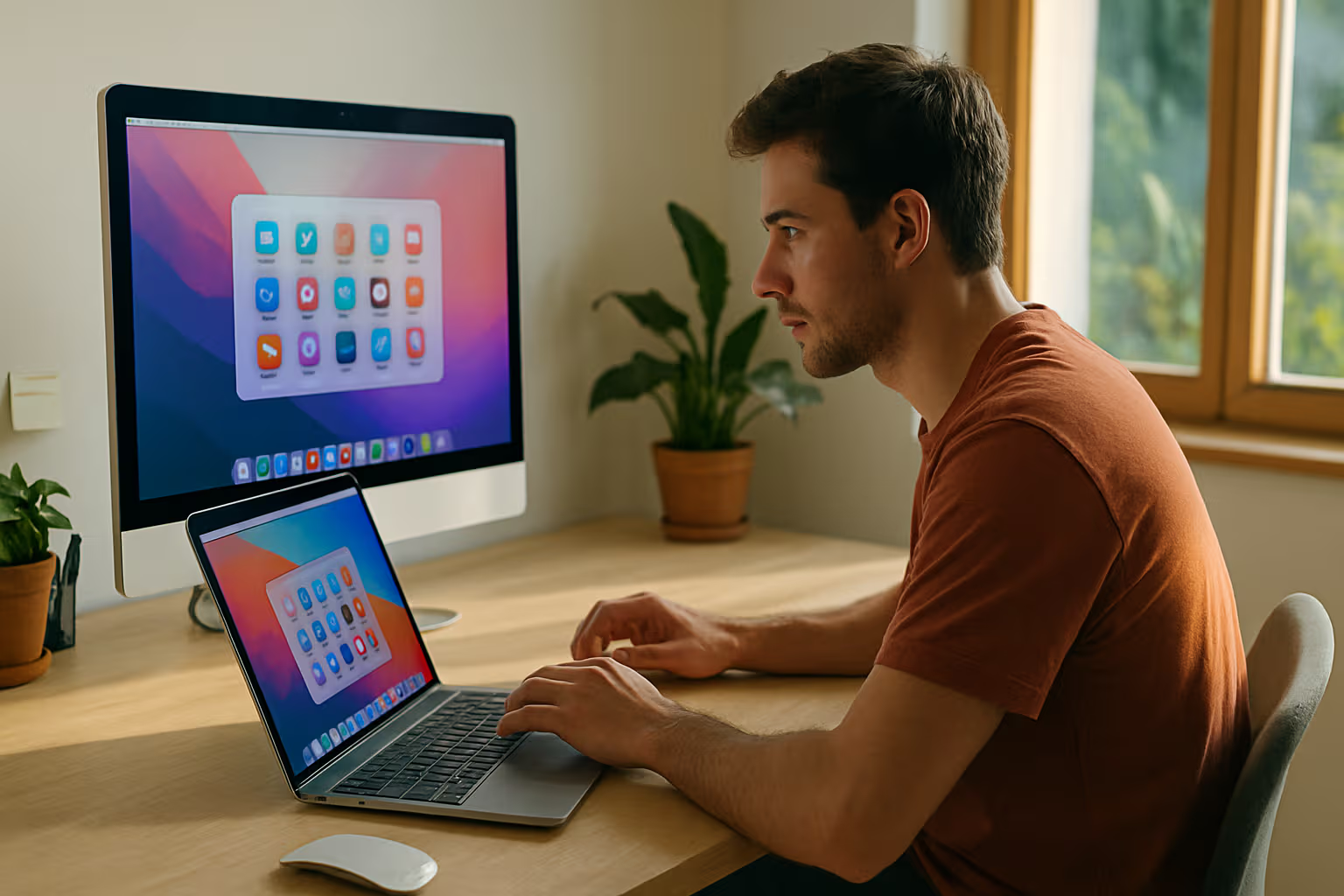
Why macOS Is the Productivity Platform You Never Fully Learned to Use
Productivity on macOS begins with perception. Most people treat the Mac as a polished canvas for third‑party apps, layering new tools in the hope that one of them will finally cure distraction and inefficiency. But what often goes unnoticed is that macOS already includes a deep set of features designed not just to make your life easier, but to rewire how you work. The brilliance of the platform lies in its restraint. Instead of overwhelming you with complexity, it nudges you into flow if you are willing to lean into its hidden architecture.
The most natural entry point into this world is Spotlight. At first glance, it resembles a search bar, similar to what you might find in any operating system. But once you start using it as your universal command line, it becomes transformative. Need to launch an application? Spotlight handles it. Want to calculate an equation or convert currencies? Spotlight delivers instantly. The time saved seems trivial in isolation, but compounded across hundreds of interactions a day, it adds up to something extraordinary. What you begin to realize is that Spotlight is less about search and more about cutting hesitation out of your workflow.
Mission Control and Desktops extend this principle into spatial organization. Modern work is not a neat stack of tasks but a messy collage of contexts: email, code editors, presentations, and documents all screaming for attention at once. Instead of stacking windows like a cluttered desk, macOS lets you separate these environments into different virtual spaces. Suddenly, your Mac becomes a series of mental rooms, each primed for a specific type of work. Swiping between them feels natural, almost physical, and it reduces the cognitive tax of context switching. Your brain no longer has to fight clutter—it simply moves through spaces with purpose.
Keyboard shortcuts are where fluency emerges. At first, they feel optional, the kind of thing only power users bother to memorize. But the more you embrace them, the more they become second nature. Invoking Quick Look to preview files without opening them, snapping screenshots precisely, or cycling through applications with a fraction of a second’s delay—it all contributes to a rhythm. That rhythm is addictive. It makes the Mac feel less like a device you operate and more like an extension of your thoughts. Once shortcuts click, there is no going back.
Automation elevates this rhythm into a system. The Shortcuts app, inherited from iOS, has matured into a complete automation engine on macOS. Imagine pressing a single hotkey in the morning to open your task manager, mute distractions, and launch the tools you need for deep work. Imagine another that archives documents at the end of the day, ensuring tomorrow begins on a clean slate. This is not about showing off clever scripts; it is about reducing the overhead of repetitive decisions. The Mac becomes anticipatory, a partner that prepares your workspace before you even ask.
Of course, focus is impossible without boundaries, and notifications are the saboteurs hiding in plain sight. macOS addresses this with Focus modes, letting you build profiles that act like gates. During deep work, only essential messages can reach you. In meetings, collaboration tools rise to the surface. In personal time, the digital walls go up completely. The beauty is not in silence but in intention. You decide when and how you can be interrupted, reclaiming the attention economy from the applications that constantly demand it.
File management is another underestimated arena. On macOS, Finder is more than a glorified folder viewer. With Tags, you can link documents across projects without confining them to rigid hierarchies. With Smart Folders, you can create dynamic views that update automatically as files meet specific criteria. Quick Look, meanwhile, saves countless clicks by giving you instant previews. The effect is that you spend less time digging and more time doing. The filing system becomes less of a burden and more of a living, responsive archive.
The Apple ecosystem, when layered on top of these features, amplifies everything. Handoff allows you to start writing a note on your iPhone and finish it on your Mac without friction. Universal Clipboard turns copy and paste into a wireless bridge between devices. Continuity Camera eliminates the dance of emailing yourself a photo, dropping it straight into your document instead. Sidecar transforms your iPad into a seamless second display. None of these tricks are headline‑grabbing, but each eliminates micro‑frictions that sap mental energy. Productivity, after all, is about preserving attention as much as it is about saving time.
Over time, these features coalesce into something bigger: rhythm. The real power of macOS lies not in isolated shortcuts but in how they seamlessly integrate into daily routines. Mornings start with Spotlight pulling everything you need into place. Afternoons glide across Desktops tailored to specific contexts. Evenings close with automations that reset the stage for tomorrow. Productivity ceases to be a fight against distractions and becomes a collaboration with the machine. You stop wrestling with tools and start dancing with them.
The irony is that many users will never scratch this surface. They will download endless productivity apps, thinking salvation lies in yet another subscription. But the fundamental shift comes from mastering what macOS already gives you. When you learn to see Spotlight as a command centre, Shortcuts as an automation hub, and Focus as a guardian of attention, you unlock a system designed not just for beauty but for flow. The operating system disappears, and in its absence, you discover something better: clarity, rhythm, and the freedom to focus on the work itself.


